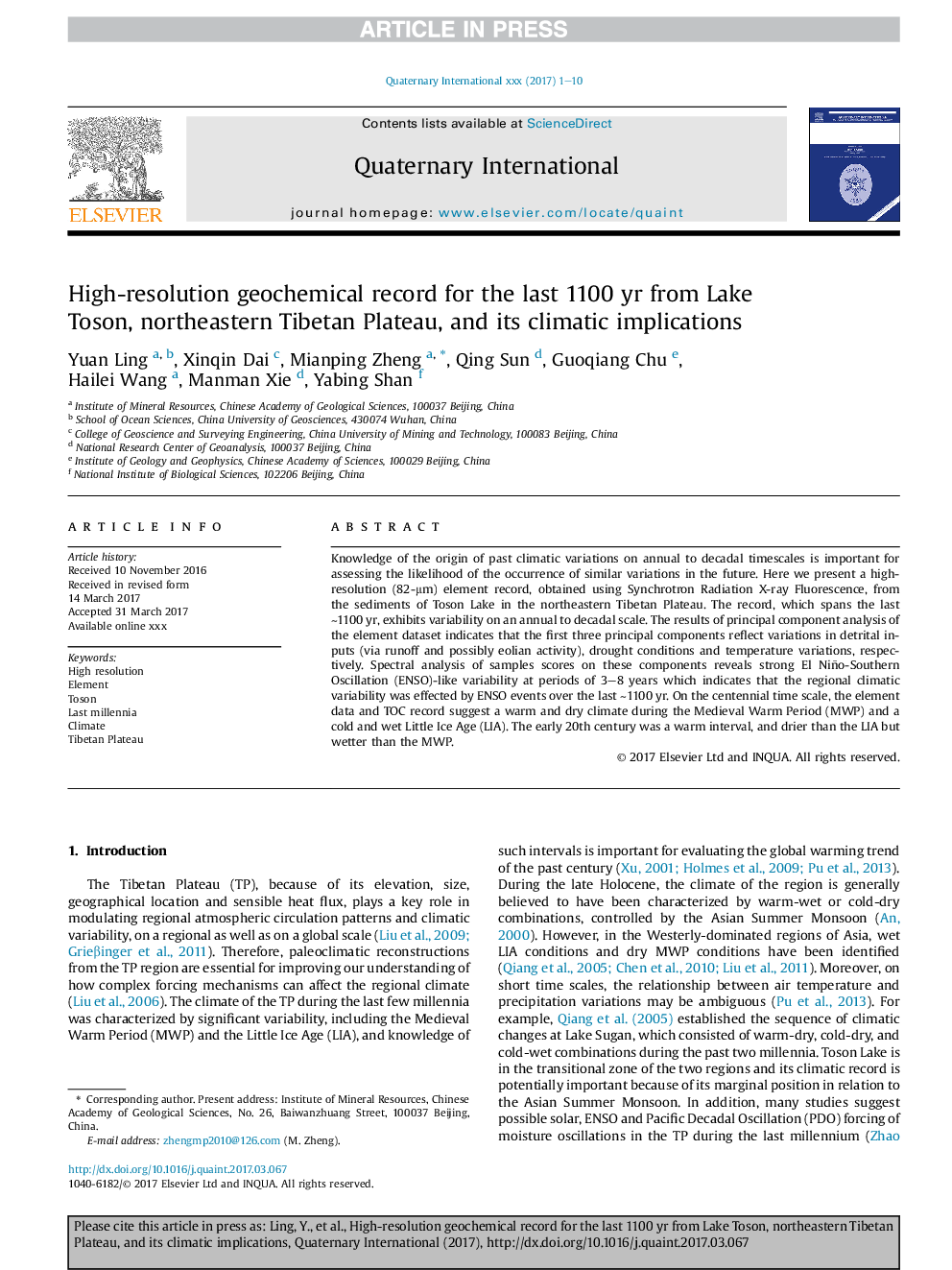| Article ID | Journal | Published Year | Pages | File Type |
|---|---|---|---|---|
| 7448924 | Quaternary International | 2018 | 10 Pages |
Abstract
Knowledge of the origin of past climatic variations on annual to decadal timescales is important for assessing the likelihood of the occurrence of similar variations in the future. Here we present a high-resolution (82-μm) element record, obtained using Synchrotron Radiation X-ray Fluorescence, from the sediments of Toson Lake in the northeastern Tibetan Plateau. The record, which spans the last â¼1100 yr, exhibits variability on an annual to decadal scale. The results of principal component analysis of the element dataset indicates that the first three principal components reflect variations in detrital inputs (via runoff and possibly eolian activity), drought conditions and temperature variations, respectively. Spectral analysis of samples scores on these components reveals strong El Niño-Southern Oscillation (ENSO)-like variability at periods of 3-8 years which indicates that the regional climatic variability was effected by ENSO events over the last â¼1100 yr. On the centennial time scale, the element data and TOC record suggest a warm and dry climate during the Medieval Warm Period (MWP) and a cold and wet Little Ice Age (LIA). The early 20th century was a warm interval, and drier than the LIA but wetter than the MWP.
Related Topics
Physical Sciences and Engineering
Earth and Planetary Sciences
Geology
Authors
Yuan Ling, Xinqin Dai, Mianping Zheng, Qing Sun, Guoqiang Chu, Hailei Wang, Manman Xie, Yabing Shan,
